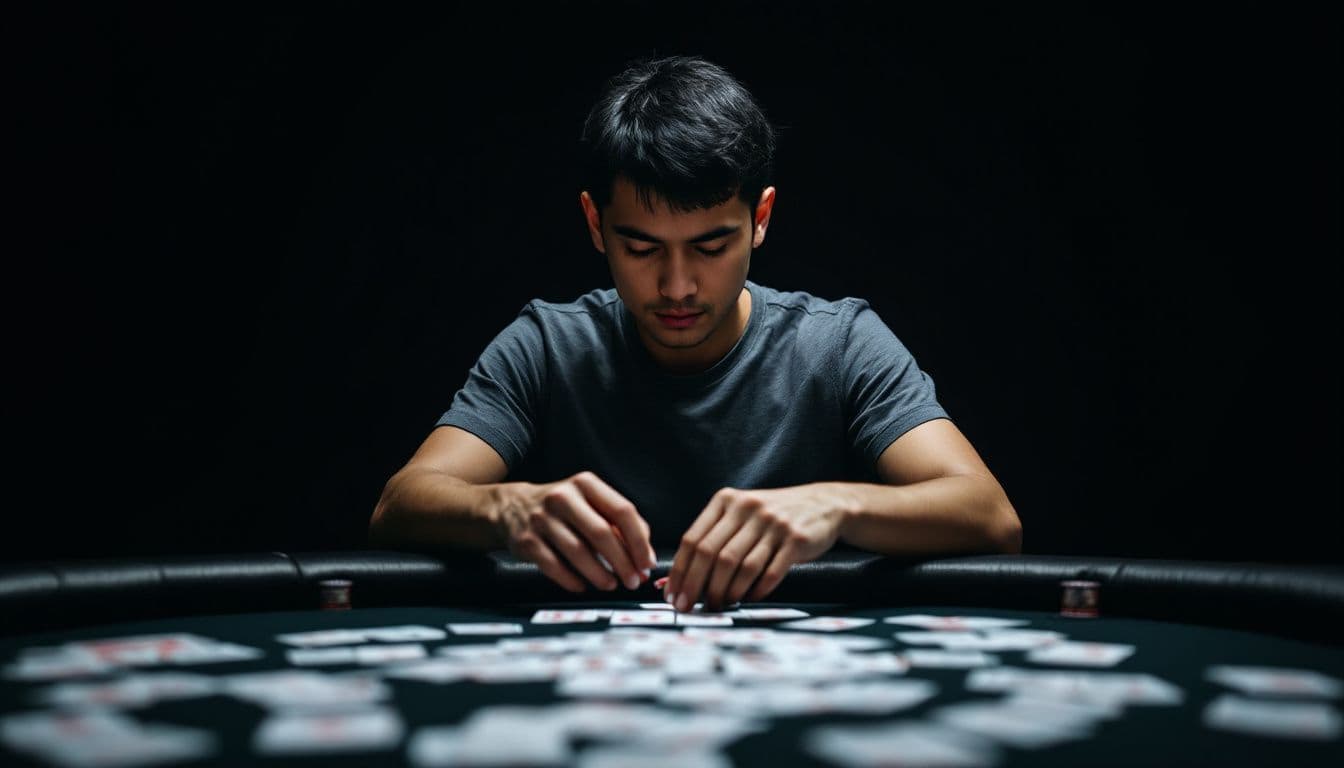Ever struggled to keep a straight face when you’re bluffing? What is a poker face, and why is it so hard to master? The term originated in America between 1880 and 1885, rooted in the game of poker.
This article will spill the beans on five secrets to nailing that perfect poker face. Ready to up your game?
Key Takeaways
A poker face is a blank look that hides thoughts and feelings, first used in 1874 for the card game poker.
Key traits of a poker face include keeping an expressionless look, blinking naturally, and staying emotionally detached.
Microexpressions are tiny facial movements lasting less than 1/4 second that can reveal true emotions.
Cognitive load from thinking hard about the game can make it tough to maintain a blank face.
Poker faces are useful beyond card games in business deals, police work, and personal relationships.
Explaining a Poker Face
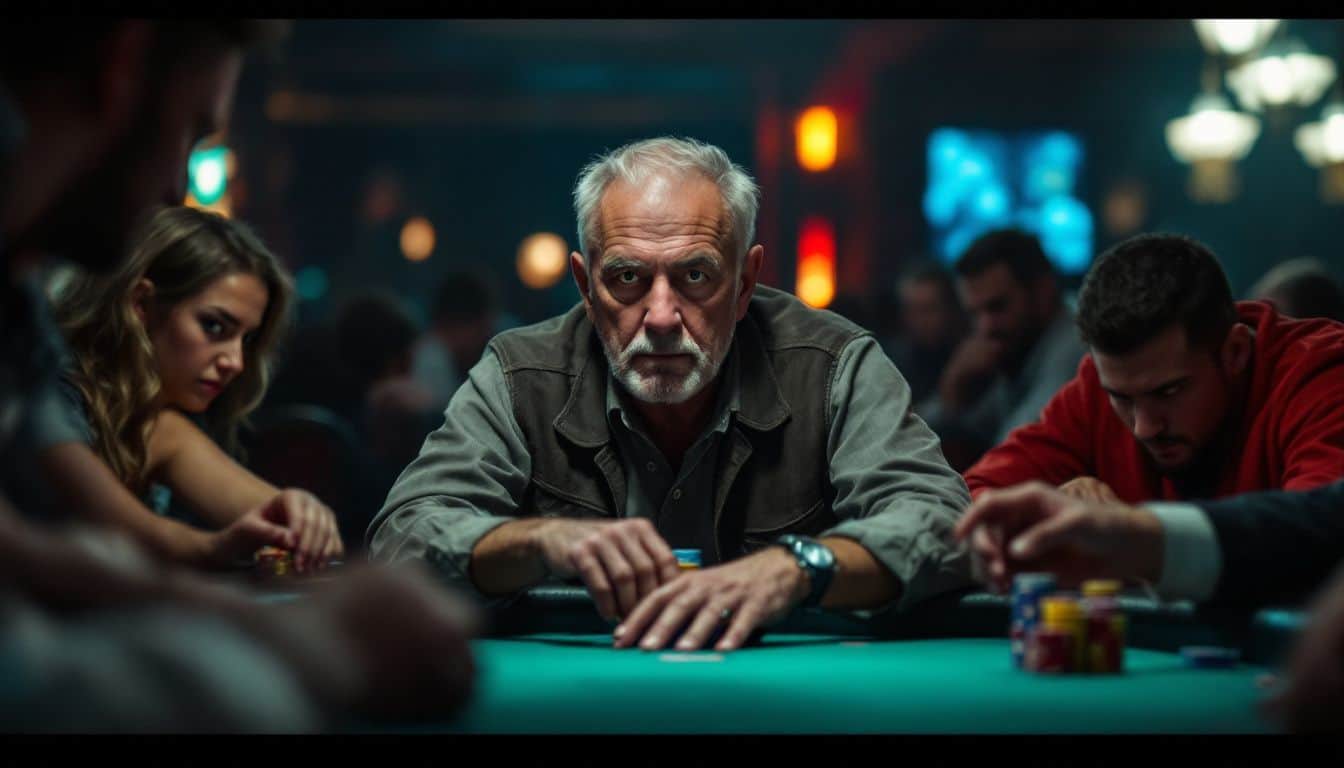
Now that we’ve set the stage, let’s dive into what a poker face really is. A poker face is a blank look that hides your thoughts and feelings. It’s like wearing an invisible mask. People use it to keep secrets or avoid giving away clues about their hand in card games.
The term “poker face” first popped up in 1874. It comes from the game of poker, where players try to fool each other. But it’s not just for card sharks. You might need one with these selected new casino sites or in everyday life.
Think of a job interview or a tough chat with your boss. A good poker face can be your secret weapon. It helps you stay cool under pressure and keeps others guessing.
Essential Traits of a Poker Face
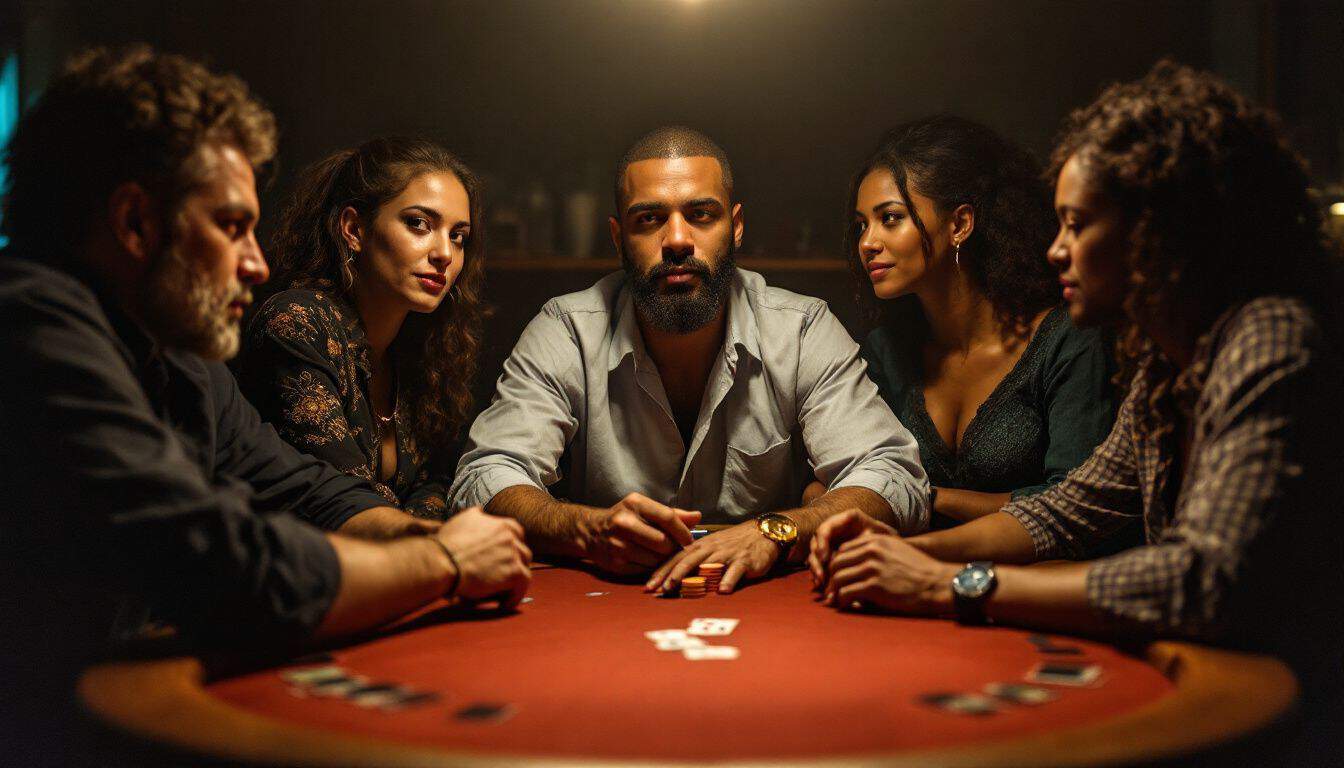
A poker face isn’t just about looking blank. It’s a mix of skills that take time to master. You’ll need to keep your cool and hide your thoughts. Plus, you’ll have to read others while they can’t read you.
Maintaining an Expressionless Look
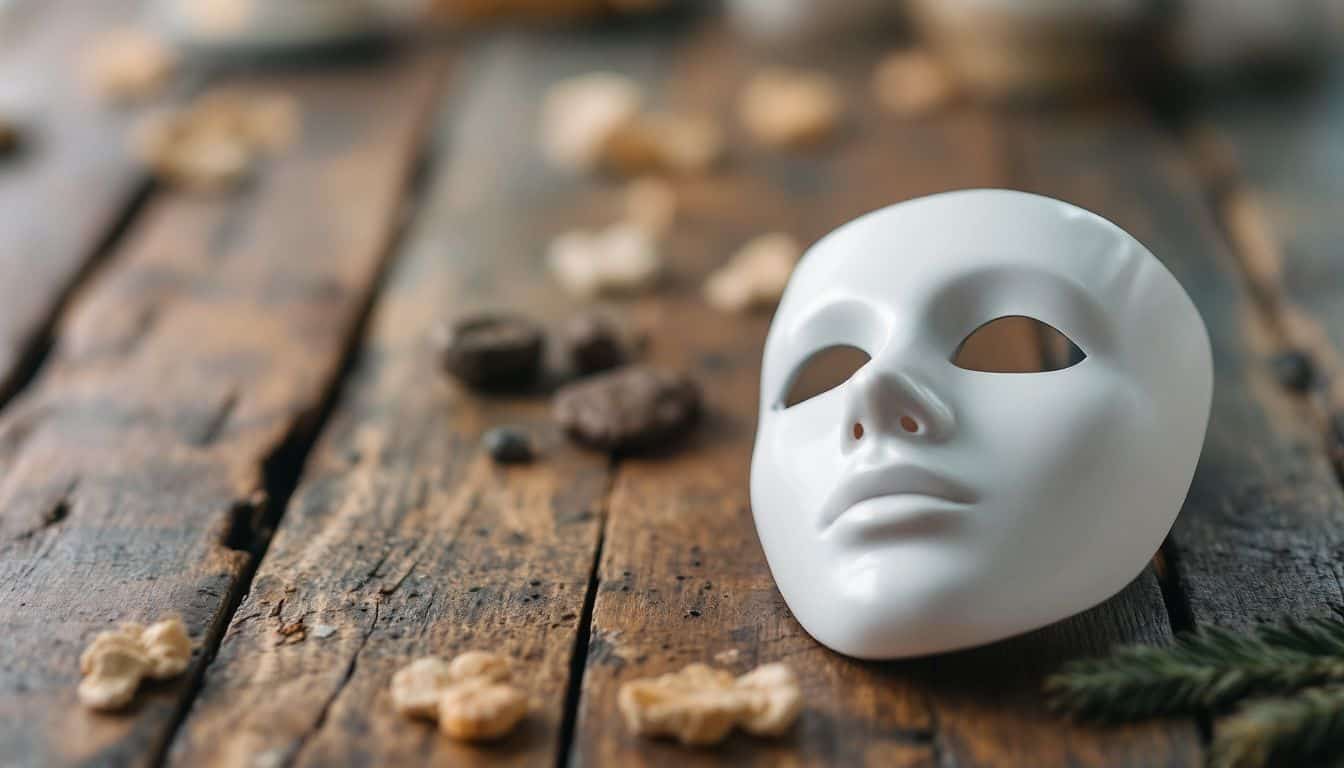
A blank face is key to a good poker face. Relax your facial muscles to keep a neutral look. Don’t frown or smile – just stay calm. It helps to practice in front of a mirror. You’ll get better at keeping your face still over time.
Blinking matters too. Do it now and then, but not too much. Rapid blinking can show stress. Keep your lips together and jaw loose. This stops signs of worry from showing. With practice, you’ll master the art of the poker face.
It’s a handy skill for more than just card games.
The face is the mirror of the mind, and eyes without speaking confess the secrets of the heart. – St. Jerome
I once used this skill in a tough work meeting. My boss was upset, but I kept cool. My calm face helped ease the tension. It’s amazing how a steady look can change things.
Cultivating Emotional Detachment

Emotional detachment isn’t about being cold. It’s a skill that helps you stay calm when things get tough. It’s like putting on armor before a battle – you’re still you, but you’ve got extra protection.
This skill is useful not just at the poker table, but in life too. It can help you make better choices at work or in tricky talks with friends.
Getting good at this takes practice. Start small – try keeping a straight face when someone tells a joke. Or keep cool when stuck in traffic. These little exercises build up your “emotional muscles.” Over time, you’ll find it easier to stay level-headed in high-pressure situations.
It’s not about ignoring feelings, it’s about choosing when to show them.
The Psychology Behind a Poker Face

Our faces can spill secrets without us knowing it. Tiny twitches and flickers – called microexpressions – can give away our true feelings in a flash.
Understanding Microexpressions
 Microexpressions are tiny facial movements that happen in a flash. They last less than a quarter of a second but reveal our true feelings. These quick changes show seven basic emotions: joy, surprise, disgust, anger, fear, sadness, and contempt.
Microexpressions are tiny facial movements that happen in a flash. They last less than a quarter of a second but reveal our true feelings. These quick changes show seven basic emotions: joy, surprise, disgust, anger, fear, sadness, and contempt.
Spotting these subtle signs can help you read people better, especially during a weekly poker night.
I once played poker with a pro who taught me about microexpressions. He said, “Watch for wide eyes – that’s shock. A real smile crinkles the eyes.” This tip helped me win big that night! Learning to spot these tiny tells can give you an edge in poker and life.
It’s like having a secret decoder for human emotions.
The face is a picture of the mind with the eyes as its interpreter. – Marcus Tullius Cicero
The Role of Self-Control

Self-control is key to a great poker face. It’s about mastering your emotions, not just keeping a blank look. I’ve seen players lose everything because they couldn’t stay calm. Trust me, I’ve been there! The secret? Practice, practice, practice.
You need to train your brain to remain calm under pressure. It’s like building a muscle – the more you work at it, the stronger it gets.
Here’s the thing: your face is connected to your feelings. If you’re excited, your eyes might light up. Nervous? You might bite your lip. These small signs can give you away at the poker table.
But here’s the good news – you can learn to control them. Begin by noticing your own tells. Then, work on keeping your face still when you feel those emotions. It’s hard at first, but it gets easier.
A solid poker face isn’t just for cards – it’s a skill that can help in business, relationships, and more.
Cognitive Load and Its Impact on Facial Expressions
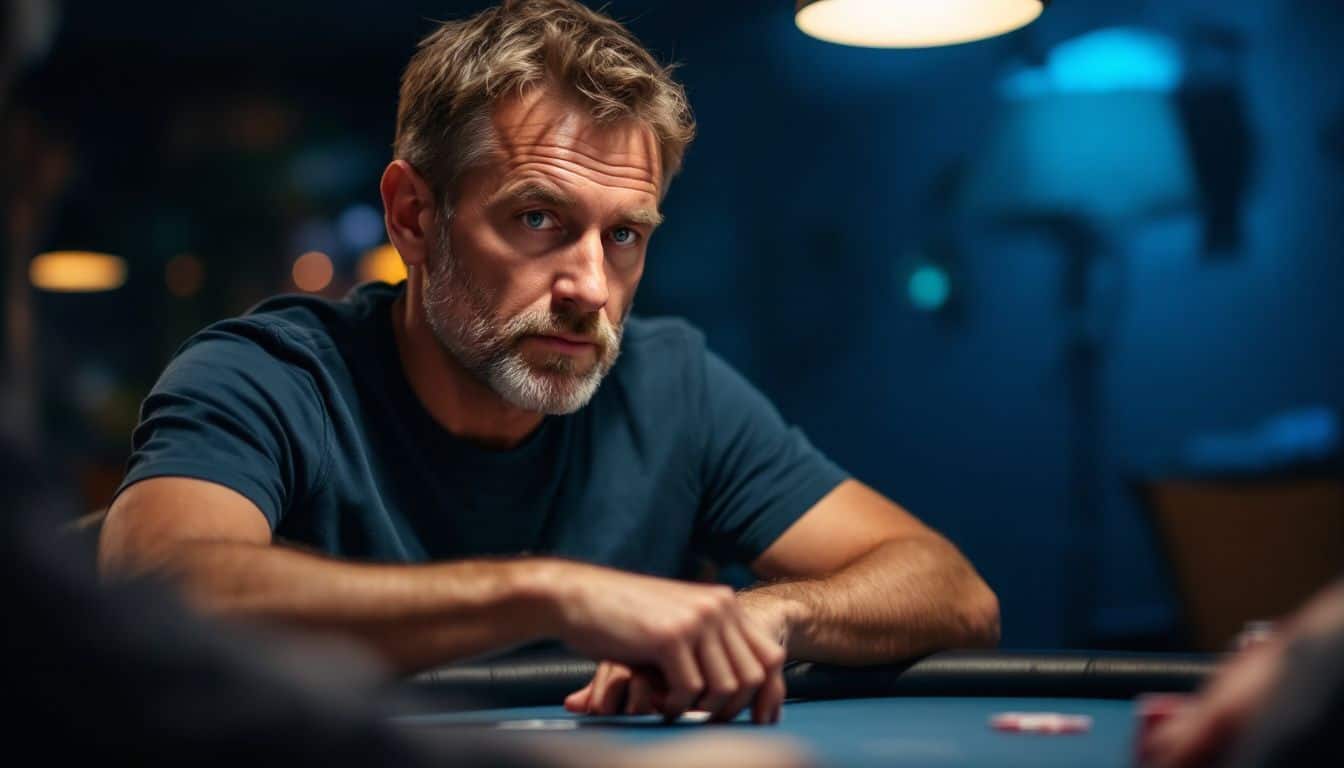
Our brains work hard when we play poker. This effort can show on our faces. Thinking deeply about cards, bets, and other players takes a lot of mental energy. This brain strain is called cognitive load.
It can make it tough to keep a blank face. Our expressions might slip, giving away clues about our hand.
Poker pros train to handle this mental pressure. They practice keeping cool under stress. By doing so, they can hide their thoughts better. This skill helps them fool opponents and win more often.
It’s not just for card games, though. Keeping a steady face during tough tasks is useful in many areas of life.
Poker Face in Non-Poker Contexts

A poker face isn’t just for card games – it’s a handy skill in many areas of life. Want to know how it can help you in business, law, and even your personal life? Keep reading!
Business Negotiations

Business deals often hinge on a good poker face. Keeping cool under pressure can make or break a deal. Smart negotiators know how to read body language and spot tells. They also know how to hide their own feelings and intentions.
Silence is a powerful tool in talks. It can make the other side nervous and more likely to cave. Being well-prepared is key too. Knowing your facts cold lets you focus on reading the room.
Next up, we’ll look at how poker faces play a role in law enforcement.
Law Enforcement and Interrogations
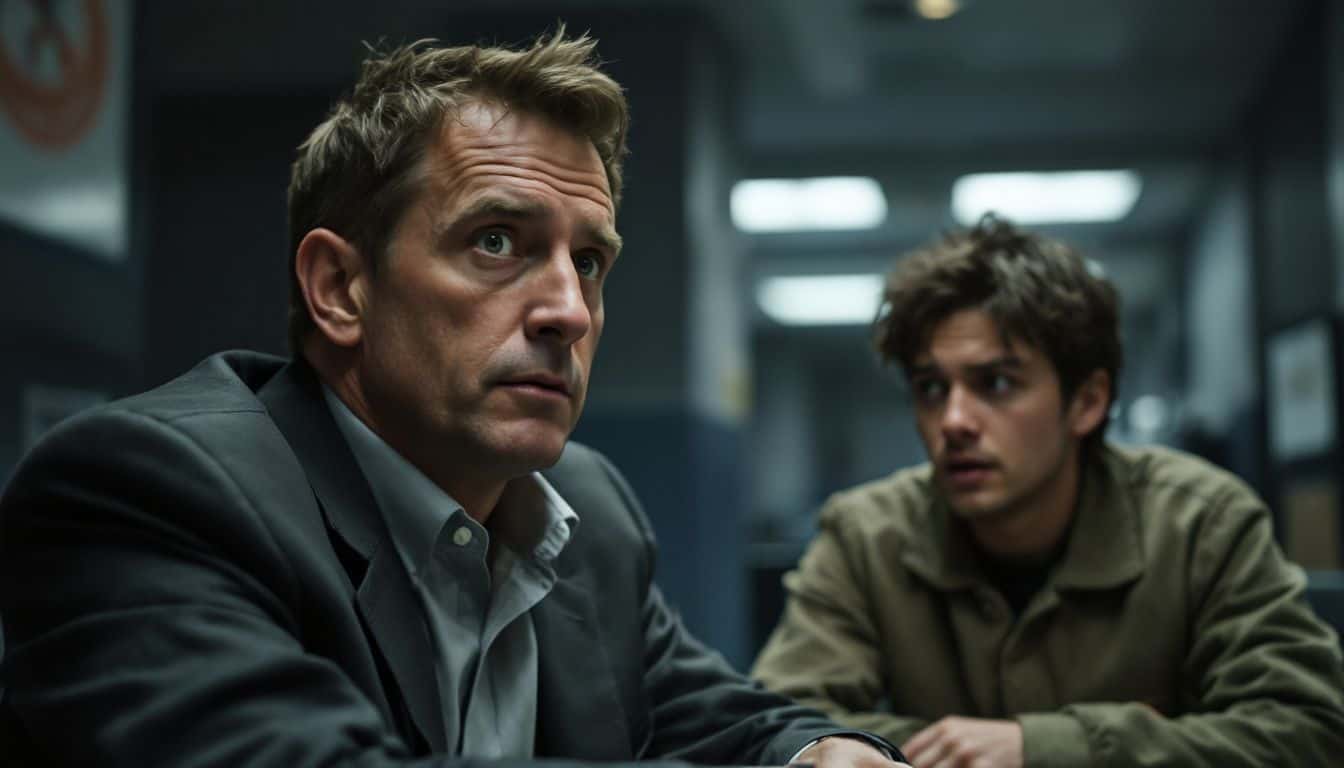
Moving from business deals to crime-solving, a poker face is just as vital. Cops and detectives use this skill daily. They must stay cool when grilling suspects. A blank look can make a guilty person spill the beans.
In the interrogation room, it’s a battle of wills. The officer must hide their thoughts and feelings. They can’t show excitement when they’re onto something big. Nor can they look upset if the suspect clams up.
It’s a mental game where the stakes are high. Freedom hangs in the balance. The ability to keep a straight face can make or break a case. It’s not just about hiding emotions. It’s about reading the other person while giving nothing away.
Personal Relationships and Social Interactions

A poker face isn’t just for card games. It’s a handy tool in our daily lives too. Think about those tricky chats with your partner or that nosy neighbor. A blank expression can be your secret weapon.
It helps you keep cool when emotions run high. You don’t spill the beans with your face, giving you time to think.
But here’s the catch – it’s not always good to hide feelings. Sometimes, showing emotion builds trust. It’s all about balance. Know when to use your poker face and when to let your guard down.
This skill can make or break relationships. It’s like a dance – you lead with your face, and others follow. Master this, and you’ll navigate social waters like a pro.
People Also Ask
What’s a poker face, and why is it important?
A poker face is a blank look that hides your thoughts. It’s key in poker and life. Merriam-Webster calls it a noun. It helps you bluff and keep others guessing. Think of it as your secret weapon at the card table.
How can I practice my poker face?
Start small. Try keeping a straight face while telling jokes. Watch yourself in the mirror. Play word games with friends and keep cool. It’s like learning a new language, but with your face. Practice makes perfect, just like in Scrabble or crosswords.
Are there different types of poker faces?
You bet! Some players go for the stone-cold look. Others prefer a slight smile. It’s not just about your face, though. Your whole body talks. Think about how you sit, move your hands, even breathe. It’s a full-body performance, like acting in different languages.
Can a good poker face help in real life?
Absolutely! It’s not just for card sharks. A solid poker face can be handy in business deals, tough conversations, or when your kid asks if Santa is real. It’s a life skill, like knowing your verbs from your adjectives.
Is it okay to use a poker face all the time?
Nope! Life isn’t a constant card game. Save your poker face for when you need it. In regular chats, be open and real. Mix it up, like using direct and indirect speech. Balance is key, whether you’re speaking English, Indonesian, or Portuguese.
References
- https://www.parkspotterafrica.com/poker-face-mastering-the-art-of-bluffing-in-the-game-of-poker/ (2024-01-10)
- https://www.wikihow.com/Have-a-Good-Poker-Face
- https://www.tachipalace.com/benefits-of-poker-face/
- https://m.youtube.com/watch?v=TDgchz0T_Rk
- https://www.theguardian.com/careers/2016/feb/16/learn-to-read-microexpressions-job-interviews (2016-02-16)
- https://www.ncbi.nlm.nih.gov/pmc/articles/PMC3831557/
- https://justicepoker.com/blog/psychology-of-the-poker-face-how-to-control-your-tells
- https://www.youtube.com/watch?v=OMRU2CtZvUs
- https://www.linkedin.com/pulse/playing-poker-can-improve-your-negotiation-skills-heres-dana-small
- https://digitalcommons.pittstate.edu/phil_faculty/27/
- https://hbr.org/2023/03/when-and-how-to-keep-a-poker-face-at-work
- https://essay.utwente.nl/81484/1/Brandes_MA_BMS.pdf
